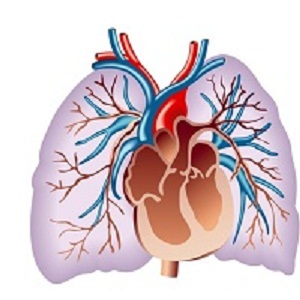Pulmonary arterial hypertension (PAH) is a type of blood pressure that occurs in the right side of your heart and in the arteries that supply blood to your lungs.
In one form of pulmonary hypertension, tiny arteries in lungs called pulmonary arterioles, and capillaries become narrowed, blocked or destroyed. This makes arteries harder for blood to flow through your lungs, and raises pressure within your lungs’ arteries. As the pressure builds, your heart’s lower right chamber (right ventricle) must work harder to pump blood through your lungs, eventually causing your heart muscle to weaken and fail.
Symptoms
Pulmonary hypertension symptoms include:
- Shortness of breath
- Fatigue
- Dizziness
- Chest pressure or pain
- Swelling (edema) in your ankles, legs, abdomen
- Bluish color to your lips and skin (cyanosis)
- Racing pulse or heart palpitations
Treatment
PAH has no cure. However, treatment may help relieve symptoms and slow the progress of the disease.
PAH is treated with medicine and by some surgical procedures.
Blood vessel dilators (vasodilators): These vasodilators open narrowed blood vessels. Commonly used one are epoprostenol (Flolan, Veletri), iloprost (Ventavis), Treprostinil (Tyvaso, Remodulin, Orenitram)
Endothelin receptor antagonists: These medications reverse the effect of endothelin, a substance in the walls of blood vessels that causes them to narrow. These drugs may improve your energy level. These medications include bosentan (Tracleer), macitentan (Opsumit), and ambrisentan (Letairis).
Anticoagulants: Anticoagulant warfarin (Coumadin, Jantoven) to help prevent the formation of blood clots within the small pulmonary arteries. Because anticoagulants prevent normal blood coagulation, they increase your risk of bleeding complications.
Digoxin: Digoxin (Lanoxin) can help the heart beat stronger and pump more blood.
If medications don’t control your pulmonary hypertension, open heart surgery might be an option. In atrial septostomy, a surgeon will create an opening between the upper left and right chambers of your heart (atria) to relieve the pressure on the right side of your heart.
